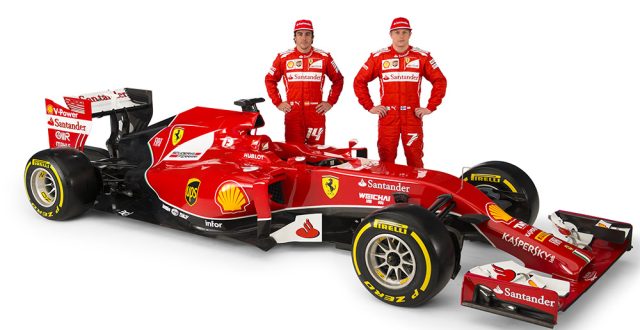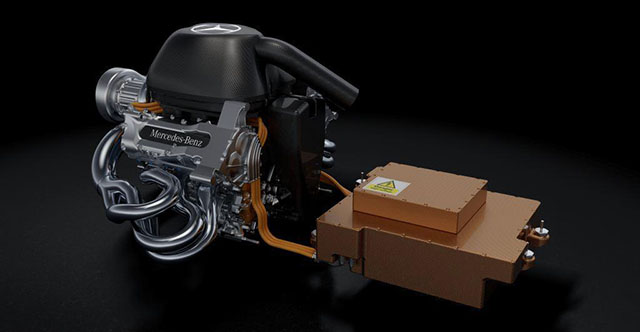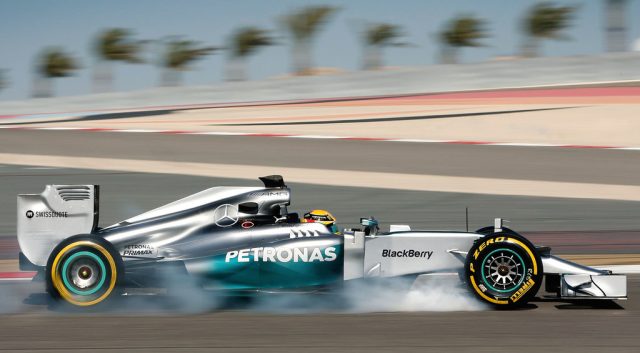
Last year Ars traveled down to Austin, Texas, to take a look at some of the most technologically advanced race cars the world has ever seen. But racing—unlike its consumer counterparts—is much like the tech sector; it waits for no one. A single year passes, and the Audi R18 and Toyota TS030 are now obsolete. So too are the machines of last year's Formula 1 season. As fast as ever, the new cars make that speed without nearly as much fuel, thanks to new rules that force them to develop much more efficient hybrid systems. The result is a technological revolution at the race track that's as exciting as as any time in the sport's past.
The cars in each major racing series—Formula 1, IndyCar, LeMans, NASCAR—are shaped by their respective rulebooks, and those get rewritten from time to time. It's usually an effort to either slow the cars down (if they're getting too fast for the tracks on which they race), make them more socially relevant (i.e., more fuel efficient), or level the playing field and make things more competitive. On the other side of the equation are the teams who go racing, whose ambition is to be the fastest and take home the trophies. If that means pushing the boundaries of what's legal—well, that's racing.
Given that the two sides of this delicate balance had 12 months to tinker, we decided to take stock of where race car design stands midway through 2014. The best part of all the exciting tweaks outlined below? There's still half a year of driving to come.
Formula 1
Let's start with Formula 1, if for no other reason than it's got a "1" in the title, and so numerically it comes first. For many racing fans, F1 is king of the hill, the ne plus ultra of purpose-built race cars. It's certainly true that of all the cars we'll cover today, nothing is quicker around a race track than an F1 car—unless that racetrack happens to be the Indianapolis Motor Speedway. What is undeniable is that F1 cars are designed and built with almost no expense spared. Teams spend hundreds of millions of dollars a year.F1 cars, like their IndyCar cousins, are known as open-wheel cars due to the lack of bodywork covering their wheels. They have a single seat just ahead of the engine and no roof. As with every other form of racing, F1 cars are a product of their sport's rulebook, and after several years of stasis, 2014's F1 rulebook looks very different. Consequently, the cars do, too—at least under the skin. In general, F1 (and the car companies that build engines for it) is trying to be increasingly relevant to road cars in an era when profligate use of hydrocarbons is becoming passé.
Each car is made from carbon fiber and weighs a mere 1,523 lbs, including the driver. Front and rear wings generate large amounts of aerodynamic grip, or downforce, pushing the car with more force onto the track the faster it goes. The size and shape of these wings is a product of a constant battle between the sport's organizers (who want to slow the cars down) and the teams, some of whom employ enormous teams of aerodynamicists to spend countless hours refining their designs. These teams use computational fluid dynamics and wind tunnel models to increase downforce and reduce drag (to recover that lost speed). Each of the 11 teams must design and build its own car from scratch, but different teams can share the same engines (currently only Ferrari, Mercedes-Benz, and Renault build F1 engines). Finally, some components are shared by every team, like the Pirelli tires and a common ECU. That last aspect prevents the teams from using driver aids like traction control, but the cars do have extremely clever rear differentials that can be tuned from corner to corner using software maps.

Gone are the 18,000 rpm, 2.4L normally aspirated V8 engines we've been used to hearing since 2006. In their place are turbocharged 1.6L V6s, which are limited to a "mere" 15,000 rpm—although none of them are even approaching that red line. That's thanks to fuel consumption rules that limit not just the amount of fuel each car is allowed for a race (100 kg, F1 measures fuel by weight), but also the rate at which they can consume it (100 kg/hr). The fuel consumption is measured by an ultrasonic sensor that sends data back to the teams, as well as the race officials, and there are severe penalties for cars that transgress the 100 kg/hr limit.
As a result, 2014's F1 engines make roughly 600 bhp—around 150 fewer than last year. To make up for that loss of power, they're allowed beefier hybrid systems than before. Yes, that's right: F1 cars are hybrids. They have been so since 2009. Until now, that hybrid power has meant an 80 bhp boost courtesy of a kinetic energy return system, or KERS. As the name suggests, KERS recovers kinetic energy—in this case up to 0.4 MJ each lap from the rear wheels during deceleration—and stores it as electrical energy in lithium-polymer batteries. Drivers can reverse the process and send that stored energy back to the rear wheels for up to 6.7 seconds each lap with the press of a button on their (extremely complicated) steering wheels.

The MGU-H is connected to the engine's turbocharger and generates electricity as the turbo's shaft spins, allowing it to capture another 2 MJ each lap. The MGU-H can also draw some of that power back from the batteries, using it to help spin the turbo (instead of the rear wheels like the MGU-K) to reduce turbo lag. Unlike years past, when the driver had to push a button to access the extra boost, the MGU-K and -H are both fully integrated into the car's powertrain. The vehicle's ECUs decide when and for how long to send energy to the wheels or the turbo.
The lower rev limit, coupled with the turbocharger (that takes energy from the exhaust that would have been emitted as sound), means F1 has abandoned its characteristic scream, described by the aforementioned Mr. Hutchinson as "ludicrously loud." This has led to some complaints from a handful of purists, but people said the same thing when the sport moved away from 3L V10s in 2006... and when it abandoned 3.5L engines (including V12s) in 1994. Those changes all happened without the sky falling.

For the past few years, certain F1 cars used their exhaust to increase downforce by routing the flow of gas to the diffuser underneath the rear wing. The Red Bull Renault team, in particular, was very good at doing this. Together with the general aerodynamic efficiency of their designs, that team ran away with the 2013 championship. Unfortunately for them, this practice is now banned. Cars must have a single round exhaust that does not contribute downforce.
The power units are the biggest change to this year's F1 cars, but they're not the only ones. Minimum weight was increased to compensate for larger batteries and the extra hybrid gubbins. Gearboxes now have eight forward gears, but unlike years past, the gear ratios cannot be swapped out to suit each track.
After several seasons of domination by Red Bull Renault, many fans must have been hoping that all these technical changes would create a more even field. That's not turning out to be the case even though Red Bull Renault is no longer dominating. Mercedes-Benz, one of the three companies that supplies F1 engines, has managed to make a much better power unit for 2014 than Ferrari or Renault. Its F1 team, Mercedes AMG Petronas, used its knowledge of that power unit to good effect, building a car that's significantly faster than anyone else this year, including the other teams it supplies. The Silver Arrows are walking away with this year's championships. At least fans have the consolation of an excellent—and intense—internecine battle between that team's two drivers for top honors.
reader comments
136